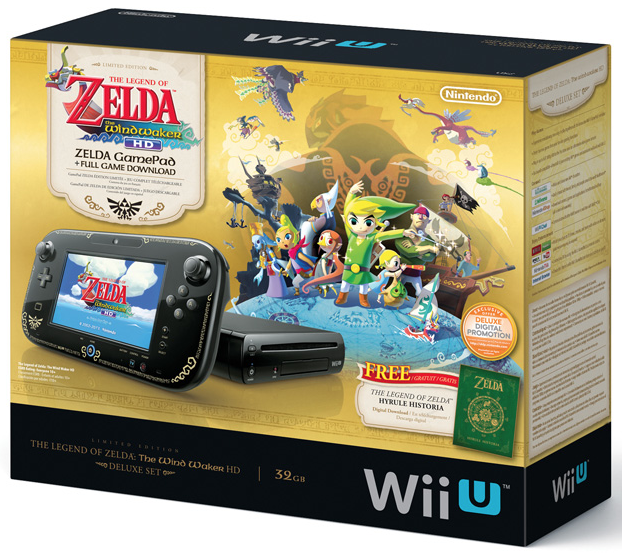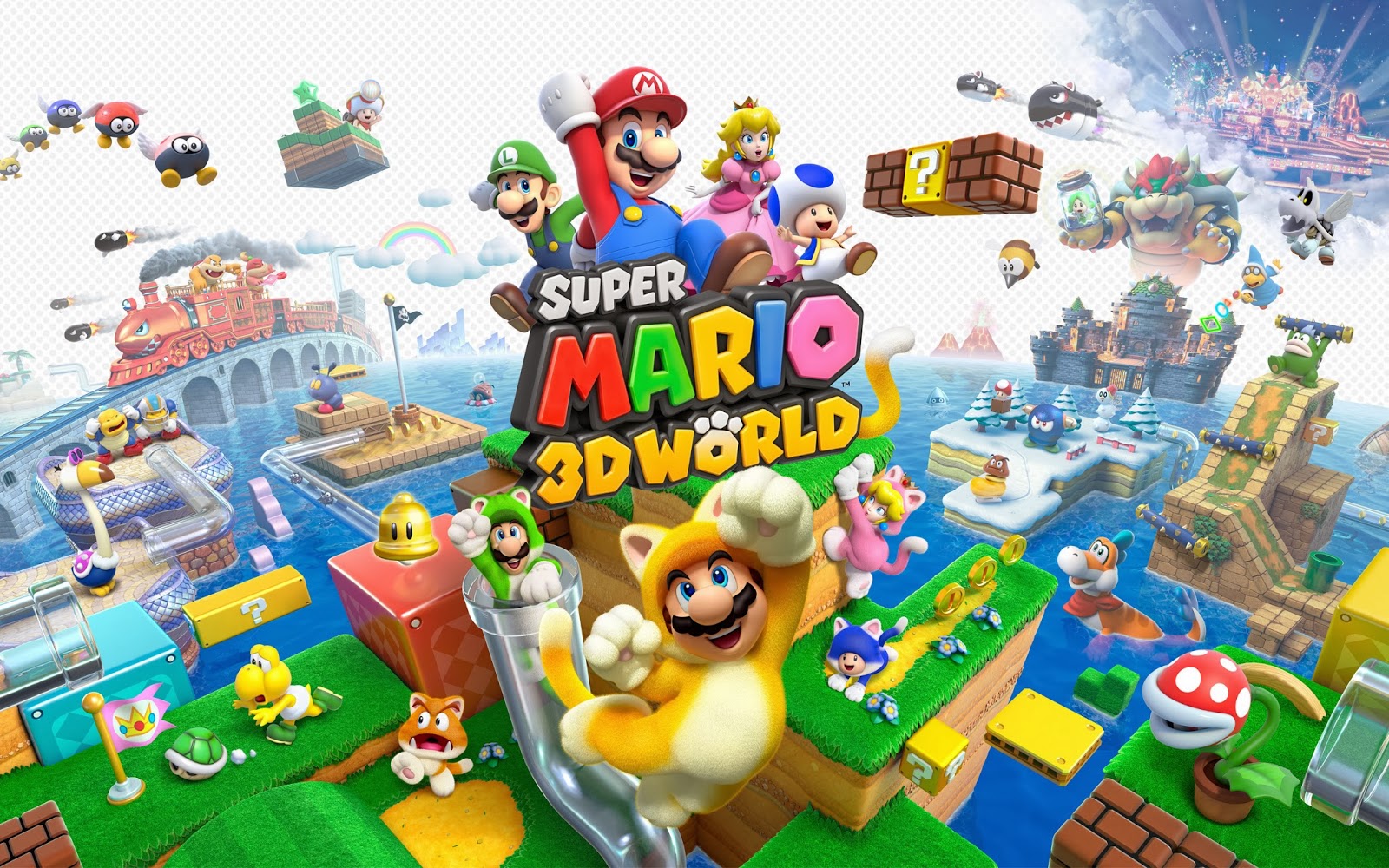A Handful of Rare Businesses Enjoy Annuity Streams That Can Generate Cash for Decades
For the past hour, my mind has been on the power of some businesses to capture annuity streams that pay dividends for years, even decades or generations, with very little additional work. When you can get one of these in your portfolio, they pump out wealth as long as you update them every once in a while. They are the closest thing to geese laying golden eggs that exist outside of fairy tales.
Specifically, it’s on my mind because Aaron and I picked up the Wii U Deluxe Legend of Zelda Wind Waker HD bundle this afternoon, but I’ll get to that in a moment.
The most famous case study of this economic concept is The Walt Disney Company. The folks there produce these animated features once that recapture their cost and provide a good return at the box office. At this point, the product has more than paid for itself and made money for owners, but the company releases the film to the home market; no more work, just duplicating the content on a new medium. The inventory is sold, then the film put back into the vault to create scarcity. When a new technology arises, such a VHS going to DVD going to Blu Ray, they bring it back out of the vault for a limited edition release in the updated format, selling it at much higher inflation-adjusted prices. Charlie Munger once described Disney as “an oil company that can put the oil back in the ground after it is done drilling so it can drill it again”.
Then, Disney picks a handful of high quality manufacturers who agree to create merchandise based on the film, with Disney getting veto power, and those companies pay Disney a huge licensing fee on the sales. The theme parks then reinforce affinity for the brands, causing them to remain relevant, resulting in this virtuous cycle that made a lot of stockholders very rich. So rich, in fact, that a single block of 100 shares bought at the IPO 56 years ago for $13,880 without any additional investment is now worth somewhere around $30,000,000. (I’m in the middle of writing a case study on it but the investor relations department won’t clarify some of the historical dividend record for me so I can’t get the specific figure, yet.)
How Nintendo Is Destroying Its Cash Generating Annuity Streams Through Bad Marketing and Software Neglect
These annuity streams are not always as well managed as they can be. Consider the case of Japanese entertainment giant Nintendo. In a lot of ways, for the 50-and-younger crowd, Nintendo’s franchises have just as much annuity power as those found in the Disney vault. The Legend of Zelda, Mario, Luigi, Metroid, and Donkey Kong are as beloved as Mickey Mouse, Donald Duck, Goofy, and the Disney Princesses. Nintendo doesn’t exploit this nearly as well as it could.
Take the release of the new Wii U. Even people who love video games were often under the impression that it was nothing more than a minor update to the existing Wii system, not a totally new console that introduced 1080p HD video, a handheld touchscreen, and many other features; as different as the Super Nintendo was from the original NES. Then, when the first big title for it was supposed to be released, Nintendo waited until the new Playstation 4 and Xbox One were launching, putting it at a needless disadvantage. But those aren’t even the most egregious mistakes, in my opinion. I think the greatest transgression is that Nintendo isn’t leveraging its single biggest source of untapped wealth: That irreplaceable brand equity that took generations to build.
The Wii U Virtual Console allows you to use the Wii U to buy digital copies of your favorite NES, SNES, and GameCube games, with plans to expand it to include Game Boy Advance and Nintendo 64 games; Mega Man, Donkey Kong, Kid Icarus, the original Legend of Zelda, the original Mario Bros, Super Metroid. The nostalgia overload is almost incomprehensible. When you factor in that you can play the game on the handheld tablet while someone else is using the television, which is synced to the Wii U, these should sell themselves, especially to any family with kids under the age of 12 where the parents want entertaining, yet age-appropriate, content.
 Disney understands this. It runs commercials aimed at parents and grandparents encouraging folks to “Relive the magic,” or “Share the memories with your family”. Yet, stop the typical person on the street who should open their wallet in a heartbeat for the Wii U and you’ll find most have absolutely no idea what the heck it does, or why they should buy one. The decisions involving its launch and marketing are monumentally stupid to the point that both Sony and Microsoft’s new consoles sold more units in 24 hours as the Wii U did in 9 months. The original Wii sales were juiced by casual gamers who will are unlikely to ever buy a console, again, while the more serious gamers were alienated due to neglect. Even now, nine months after being released, there are hardly any games for this new system worth purchasing. “Just a little bit longer …”, “it’s in development” … This is their business. That’s not acceptable.
Disney understands this. It runs commercials aimed at parents and grandparents encouraging folks to “Relive the magic,” or “Share the memories with your family”. Yet, stop the typical person on the street who should open their wallet in a heartbeat for the Wii U and you’ll find most have absolutely no idea what the heck it does, or why they should buy one. The decisions involving its launch and marketing are monumentally stupid to the point that both Sony and Microsoft’s new consoles sold more units in 24 hours as the Wii U did in 9 months. The original Wii sales were juiced by casual gamers who will are unlikely to ever buy a console, again, while the more serious gamers were alienated due to neglect. Even now, nine months after being released, there are hardly any games for this new system worth purchasing. “Just a little bit longer …”, “it’s in development” … This is their business. That’s not acceptable.
This is a management problem. They are sitting on an cache of intellectual property that is one of the few enterprises in human history to span multiple continents, languages, cultures, religions, and genders.
The executive failures have shown in Nintendo’s profits. Earnings per share back in 2008 were ¥2,012.13 while they are only ¥279.14 now, a drop of 86.13%. The stock market eventually recognized the declining intrinsic value, with shares on the Tokyo Exchange collapsing from as high as ¥73,200 per share in 2008 to a mere ¥12,820 at the moment (and that’s after a massive increase this year! Imagine how bad it looked twelve months ago.)
(Side note: This is one of the reasons that consumer staples tend to dominate over long periods of time. It would take a genius to destroy that kind of income from a corporation like Unilever, Procter & Gamble, Colgate-Palmolive, or Clorox, while in tech, even smart people can misstep and the fall behind a single launch cycle.)
Further harming Nintendo is its refusal, despite discussions going back decades, to develop a theme park on scale with Disneyland, which could create the same self-reinforcing brand affinity Mickey Mouse enjoys. Were I the CEO of Nintendo, I wouldn’t even try to do it myself. I’d do a joint partnership with The Walt Disney Company with 40% ownership, each, then sell the other 20% through a separate publicly traded enterprise, and make sure there was some 20-year re-purchase agreement so we could turn it back into a subsidiary once it had produced enough cash to pay for itself. They are leaving billions of dollars on the table because they suffer from this delusion that they, themselves, need the expertise to build such a tourist attraction. They don’t. You hire the best people in the field. It’s one of those cases where synergy – the real thing, not the buzzword it has become – between two powerhouses bringing their best assets to the tablet could create exponentially greater results than the sum of the parts alone. It’s not like this is an untested concept. Several years ago, there was a touring Pokemon carnival setup throughout Japan that broke records. The demand is there. People want it. They are happy to open their wallets for it, but no one can meet the demand due to the intellectual property rights belonging solely to to a firm that refuses to do anything with them, while “investigating” the possibility every five or ten years.
Nintendo does so much right – the new 3D Super Mario World is innovative and fun, the device is backward compatible with the prior generation, it’s affordable, and the exclusivity of its franchises means that if it can solve the problems, it will be able to keep all of the rewards (unlike Sony and Microsoft battling for a cut of the blockbuster games released on both systems simultaneously). At the moment, none of those successes are translating into meaningful earnings for the owners. That is not something that can be tolerated indefinitely. Something needs to be done.
The homework for those of you who want to understand the mechanics of this sort of thing: Read through Nintendo’s historical annual reports. (My own interest in Nintendo’s fiscal history goes back a long way. When I was in elementary school I wrote the North American corporate headquarters out in Redmond, Washington, and asked if the firm was publicly traded. They sent me the information on how to buy shares in Tokyo. I never did, but I appreciated them taking the time to respond to a ten year old with very specific information.)



